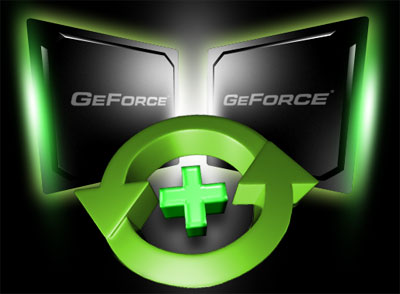
GeForce Boost
GeForce Boost is a technology that will be less important to enthusiasts, but more important to mainstream desktop and notebook users. In the grand scheme of things, it does what it says on the tin, in that it boosts graphics performance.How it does this is it combines the newly included mGPU on all Nvidia nForce 700a-series motherboards with an entry-level discrete graphics card to deliver higher performance. Nvidia said that it will not be enabling GeForce Boost on higher-end cards though, because it said that the laws of diminishing returns would come into play.
For example, if you’re taking a 16 stream processor IGP and adding in, say, a 128 stream processor GeForce 8800 GTS 512 – the benefit of those extra 16 stream processors is going to be very small and it could actually act as a decelerator. This is because the discrete GPU will always be waiting for the IGP to render its share of the frames, given that Nvidia would probably use alternate frame rendering, as that delivers the highest performance gains.

Nvidia GeForce Boost logo
Nvidia says that once nForce 700a series motherboards become available, GeForce Boost will be supported by the GeForce 8500 GT and GeForce 8400 GS, as it said that they’re very similar in architecture to the IGP inside the nForce chipset. As a result this means that, unlike HybridPower, there are no hardware modifications required to support GeForce Boost – it’s merely a case of Nvidia enabling it at the driver level on products that it feels it is appropriate to do so.
The technology itself works in much the same way as conventional SLI in that graphics commands from the API are sent to both the integrated and discrete GPUs and then the two GPUs take it in turns to render frames – that’s known as alternate frame rendering and for those that don’t understand how SLI’s rendering modes work, we recommend going back to read our initial SLI coverage.
Nvidia then uses BLTs (Block transfers – not Bacon, Lettuce and Tomato sandwiches, for what it’s worth) to transfer the discrete GPU’s rendered image to the integrated motherboard GPU’s frame buffer, as the mGPU will be used for the primary display output in much the same way that it will be for HybridPower mode.
In the past, SLI has always been about using GPUs from the same class—initially, the cards had to be identical (even down to the BIOS revision used)—but this is the first time that Nvidia has moved to what we’re referring to as heterogeneous SLI, because the two GPUs aren’t the same. Because of this mismatch, you would assume that there is going to be a massive amount of latency involved in the process and the result would be next to no performance increase.
A lot of this is down to the driver team’s effort—we told you that it was a complex development process—as they’ve built in some intelligent balancing techniques that help to ensure neither GPU is waiting for longer than is necessary while the other finishes rendering a frame. This is another reason why Nvidia is only enabling it on lower-end discrete GPUs – it’ll be interesting to see how this works out in the long run and whether you’ll experience any stuttering in GeForce Boost mode.
What was the most interesting thing about Nvidia’s discussions on Hybrid SLI—and in particular GeForce Boost—was the lack of information on the nForce 700a series’ mGPU. The company’s representatives didn’t give much in the way of details—it wouldn’t even disclose stream processor, texture unit and ROP counts—and most questions were answered with what amounted to a big (green) fluffy “no comment”. Thankfully though, with a bit of digging, we did manage to find out a few details.
You see, Nvidia also announced the GeForce 8200 at the same time as Hybrid SLI and, from what we understand, the IGP inside the nForce 700a series boards is almost identical to the GeForce 8200 mGPU.

MSI MPG Velox 100R Chassis Review
October 14 2021 | 15:04












Want to comment? Please log in.